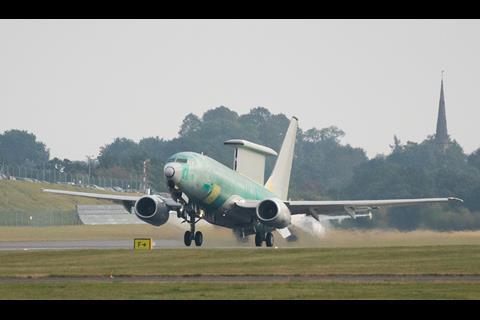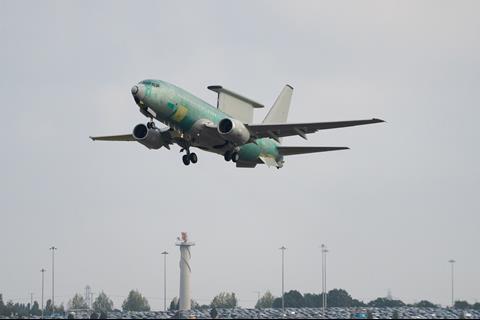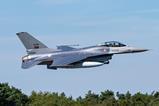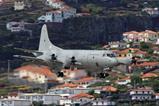The UK Royal Air Force (RAF) has edged a step closer towards restoring its lapsed airborne early warning and control (AEW&C) capability, after the lead of three Boeing 737NG-based E-7 Wedgetail platforms completed a first post-modification flight.
Conducted from Birmingham airport in the UK on 20 September by an all-Boeing flight-test crew, the functional check flight assessed the twinjet’s “flying control, engine and avionics systems”, the RAF says.
Now with the registration WT001, the CFM International CFM56-powered narrowbody had arrived at conversion partner STS Aviation Services’ Birmingham facility in January 2021, as N946BC.
“This safe and systematic functional check flight is an important step for Boeing and the RAF as part of our rigorous and extensive testing and evaluation,” says Stu Voboril, Boeing E-7 programme manager. “Our team is committed to ensuring the E-7 delivers the safety, quality, and capabilities we’ve promised to our customer,” he adds.
“We look forward to continuing the test and evaluation phase as part of our preparations for the aircraft to enter into service,” says Group Captain Richard Osselton, the RAF’s Wedgetail programme director.
The lead aircraft will be painted with its grey livery “later this autumn… following a series of flight tests and further evaluation”, the service says.
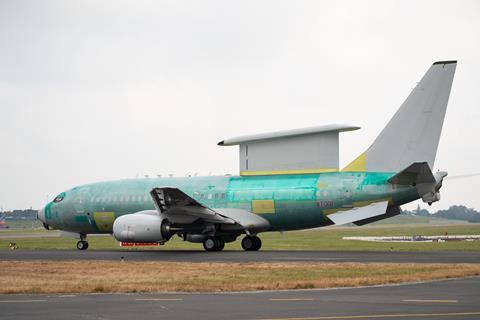
The service’s new AEW&C and battle management capability is due to enter service during 2025, with three aircraft having been modified. Its last Boeing 707-based E-3D Sentry Airborne Warning and Control System aircraft were retired in 2021, after a 30-year service life.
“We’re proud of the robust E-7 modification line we’ve stood up in the UK to deliver the RAF’s future airborne early warning and control fleet,” says Maria Laine, president of Boeing UK, Ireland and the Nordics. “We are committed to delivering this crucial capability to support the UK’s national security and contribute toward regional stability.”
The UK’s Wedgetail acquisition was originally set at five aircraft, but two of those jets were removed from the originally £1.5 billion ($2 billion) programme during a defence review in March 2021. Its trio of jets include one new-build airframe and two remanufactured from a Boeing Business Jet configuration.
The RAF’s Wedgetail AEW1 aircraft will be operated by its 8 Sqn from Lossiemouth in Scotland, which already houses nine 737NG-derived P-8 Poseidon MRA1 maritime patrol aircraft.
On 19 September, the RAF opened a new combined line engineering facility at the base, which will be used during the support of both the Poseidon and Wedgetail fleets.
“Collocating the teams will bring significant advantage as they operate, train and learn from each other to drive synergies into the maintenance of the two capabilities,” says Air Commodore Alex Hicks, the RAF’s head of capability delivery for intelligence, surveillance and reconnaissance.

Boeing says the Northrop Grumman Multi-role Electronically Scanned Array (MESA) radar-equipped Wedgetail – which is already operational with Australia (6), South Korea (4) and Turkey (4) – can track “multiple airborne and maritime threats simultaneously, with 360° coverage”.
“The growing global E-7 fleet provides mission systems interoperability, mission readiness and lifecycle cost advantages, as well as a common technical growth path to stay ahead of global threats,” Boeing says.
The US Air Force has so far ordered two examples via a rapid prototyping deal worth $2.6 billion, while NATO plans to field six of the type to meet its initial Alliance Future Surveillance and Control requirement.























